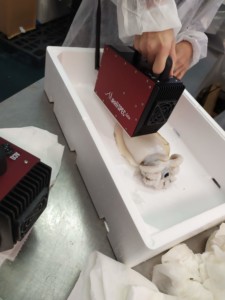When and why is spectrophotometry in the fish sector important? The Department of Comparative Biomedicine UNIPD – FOOD HUB demonstrates how useful this tool is for the control and safety of food.
In the fish sector, the consumer and the control authorities’ relevant requirements are attributable to the authenticity, storage conditions, and traceability of the product on the market. Furthermore, to be considered fit for human food consumption, fish products must meet specific legal criteria.
From what is defined by the regulations in force and compliance with the hygienic-sanitary requirements, there is also the obligation of labeling.
The label must indicate specific information of the marketed product, including the commercial name, the species, the area of fishing (FAO area), the production method (farmed or wild), the category of fishing gear used (nets, pots, traps), the physical state of the product (fresh or thawed) and the minimum shelf life in the case of a packaged product.
 It, therefore, appears evident the need to accurately and quickly verify the reliability of what is declared on the label at the points of sale and along the fish supply chain. Near infrared spectrophotometry (NIR) appears to be a satisfactory and widely applied approach in food control to meet these needs.
It, therefore, appears evident the need to accurately and quickly verify the reliability of what is declared on the label at the points of sale and along the fish supply chain. Near infrared spectrophotometry (NIR) appears to be a satisfactory and widely applied approach in food control to meet these needs.
The correct identification of the product makes it possible to detect any commercial fraud, such as the replacement of species of high economic value with species of lesser value, an action often favored by the loss of morphological references to which, for example, already filleted products are subject; or the sale of the thawed product labeled as fresh.
Spectrophotometric applications in the VIS-NIR range have shown in several circumstances to correctly identify the fish species in processed or semi-finished products in 100% of cases and to distinguish with an accuracy of 97% the fresh/thawed product and the area of origin.
A new frontier of VIS-NIR applications is demonstrating the effectiveness of using technology in determining the shelf life of fish products. This technology allows measuring with a reasonable degree of accuracy the days of conservation, the organoleptic aspects related to the freshness of the product, and the indicators associated with the deterioration of the same.
Thanks for the research activities conducted by Luca Fasolato, Stefania Balzan, Sarah Currò, and Lorenzo Serva in the continuous application of VIS / NIR systems in food safety.